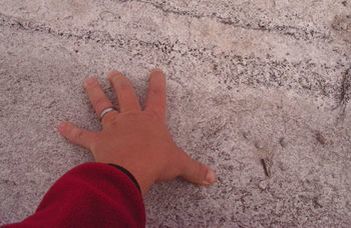Mantle metasomatism and its role in the evolution of the entire lithosphere

18. September 2023. 17:00 - 18:00
Lágymányos Campus, Pázmány Péter sétány 1/C, South Building, Room Sztrókay (00-708) & Zoom
18. September 2023.17:00 - 18:00
Lágymányos Campus, Pázmány Péter sétány 1/C, South Building, Room Sztrókay (00-708) & Zoom
Registration is mandatory, please register on the link below.
Zoom, registration: https://forms.gle/BNb6DHiBRK5FHMi8A
Time and Venue: 18. September 2023, 5 pm, Lágymányos Campus, Pázmány Péter sétány 1/C, South Building, Room Sztrókay (00-708) & Zoom
The interior of our planet consists of different spheres, out of which lithosphere including the crust and the upper part of the mantle is the outermost. At first glance the lithospheric mantle seems to be homogeneous, because it is dominantly composed of four mineral phases (olivine, ortho- and clinopyroxene, spinel), although with various proportions in different areas. Other minerals with lower modal presence also occur in the lithospheric mantle (e.g., amphibole) making it geochemically more complex. This modal variability can be produced by partial melting, but more frequently it is due to interactions between upward migrating fluids, melts and wall rocks. This latter process is called metasomatism.
Metasomatism in the upper mantle is a deep-seated phenomenon that seemingly has no effect on the humankind. In contrast, we now have a vast knowledge revealing that these deep-rooted processes have an indirect effect on our lives since influencing the physical state of the lithosphere, circumstances of melting events and the distribution of elements. Therefore, upper mantle metasomatism has an impact on the distribution of geohazards (volcanism, earthquakes) and raw materials (ore deposits) on surface.
The focus of this current presentation is on our wider geological neighbourhood, the Carpathian-Pannonian region. The reason of this is that there is a huge knowledge assembled in the last decades with respect to distinct mantle metasomatic events. These results have a relevance far beyond the regional interest and have global implications.
About the presenter:
Levente Patkó started his research career on upper mantle rocks as a bachelor student in the Lithosphere Fluid Reseach Lab under the supervision of Csaba Szabó. He graduated as a geologist at the Eötvös Loránd University in 2014. He also carried out his Ph.D research at the Eötvös Loránd University at the Doctoral School of Earth Sciences, where he defended his thesis titled ‘Integrated study on the interaction between upper mantle and mafic melt evidenced by wehrlite xenoliths from the Nógrád-Gömör Volcanic Field’ in 2020. Subsequently, he was employed at the Institute of Earth Physics and Space Science as a postdoctoral researcher. Currently he is employed in an OTKA research project hosted by the Eötvös Loránd University.

The modal variability of mantle rocks produced by reactions between basaltic liquids and lherzolite wall rocks in different tectonic settings based on thermodynamic modelling.
About the organizer:
Since the formation of the Lithosphere Fluid Research Laboratory (LRG) in 1998, the group led by Csaba Szabó published more than 100 peer-reviewed scientific publications, 25 PhD theses and more than 50 TDK and OTDK winning student theses. In their scientific work, the students of the LRG cover broad areas of geochemistry of the lithosphere and its fluids, such as fluid and melt inclusions in various geological environments, petrology of the lower crust and the upper mantle, geological storage of CO2 and H2, the source and fate of radon, or environmental and urban geochemistry of former industrial centers. The LRG initiated this seminar series in 2019, to invite former students of the laboratory (who are now accomplished scientists) to present their research to the next generation of geochemists.
Cover image source: Wikipedia
